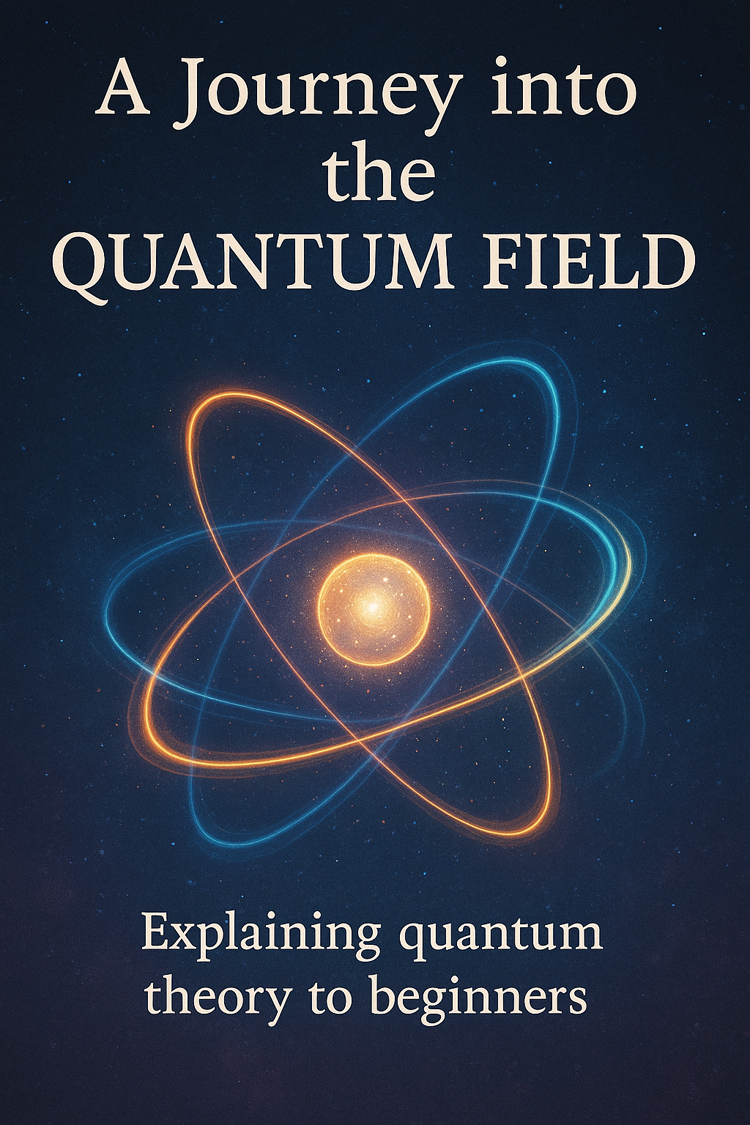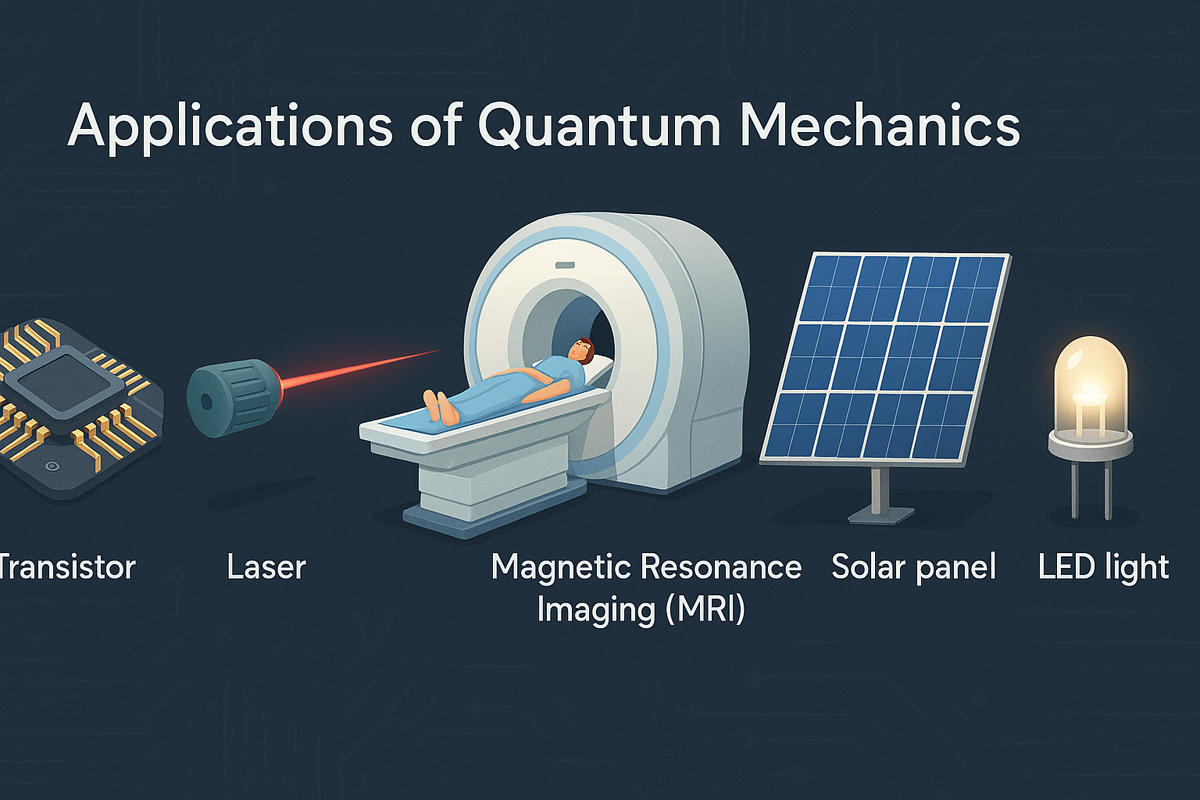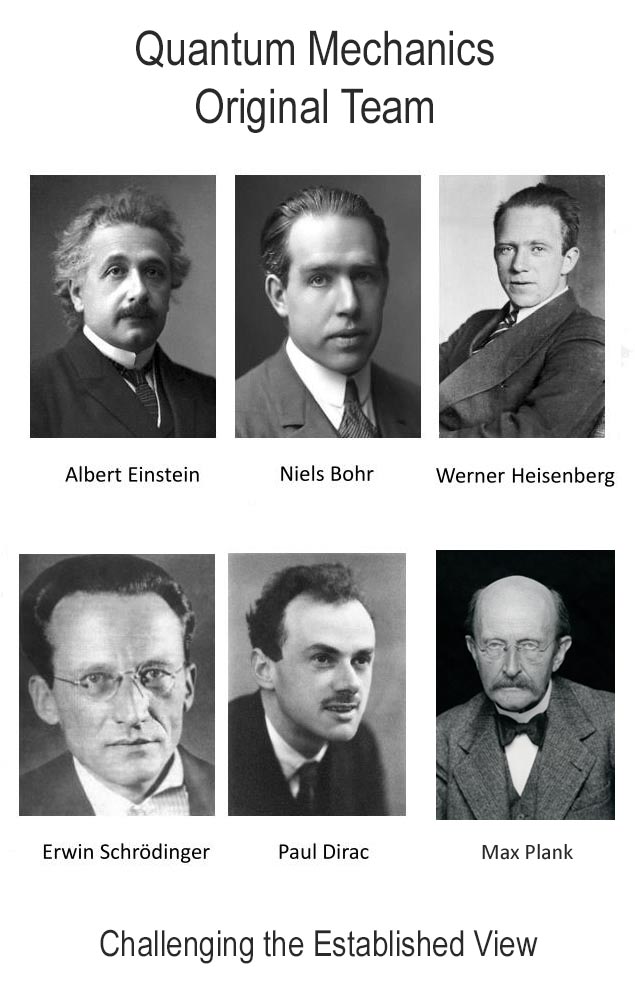THUS SPOKE MY OLD MAN !
Welcome to the Idle Words Said in Passing!

INTRODUCTION
Quantum Mechanics:
From Mysterious Beginnings to Modern Technology
SHOULD WE ACQUAINT OURSELVES WITH IT?
At the turn of the 20th century, science was on the brink of a major shift. The classical physics of Isaac Newton, which had explained everything from falling apples to planetary motion, was no longer enough to make sense of certain puzzling discoveries, such as the strange behaviour of particles at the atomic level. These mysteries led to the birth of quantum mechanics: a radically new way of understanding nature.
And it wasn't long before scientists realized that quantum mechanics wasn't just a better theory, it was a powerful new lens through which to understand and eventually manipulate the physical world.
This essay explores my own introduction to the fascinating story of how quantum mechanics began, and how its strange and often counterintuitive principles are being applied today in new fields of science and technology; quantum computing, secure communication, and advanced materials research. What started as a way to make sense of the behaviour of tiny particles has become a foundation of modern technology and innovation.
THE ORIGINS: A REVOLUTION IN THINKING
The story of quantum mechanics starts around 1900, when German physicist Max Planck proposed that energy isn't continuous, but comes in small, discrete amounts he called "quanta." A few years later, Albert Einstein expanded on this idea to explain the photoelectric effect, showing that light itself could behave like a particle, a photon. These ideas challenged the classical view of the world and led to new ways of thinking about energy, matter, and motion.
In the decades that followed, scientists like Max Born, Niels Bohr, Werner Heisenberg, and Erwin Schrödinger developed the mathematics and mathematical models which now form the basis of quantum mechanics. Concepts like the uncertainty principle, quantum entanglement, and wave-particle duality entered the scientific vocabulary. These were innovative and bold ideas, and they opened the door to a completely new understanding of how the universe works on the smallest of scales.

FROM THEORY TO TECHNOLOGY
For much of the 20th century, quantum mechanics was mainly used to explain physical phenomena and guide research in fields like chemistry and particle physics. But it didn't take long for the theory to begin shaping the tools of modern life.
Transistors, the tiny electronic switches that power every computer and all smartphones rely on quantum principles. So do lasers, which are used in everything from DVD players to eye surgery. Magnetic resonance imaging (MRI) machines, solar panels, atomic clocks, and even LED lights are all made possible by the application of quantum mechanics principles.
In short, quantum theory moved from abstract equations on chalk-boards to the heart of everyday technology.
THE SECOND QUANTUM REVOLUTION: TODAY AND TOMORROW
We are now in the midst of what many experts call the "second quantum revolution." This new phase isn't just about understanding individual particles, it's about using the full power of quantum systems to solve complex problems that classical systems struggle with.
It is important to note that all ancient philosophers developed their philosophies and writings in the context of their own times. They were all influenced by the circumstances and the people around them and the places in which they lived.
One of the most exciting developments is quantum computing. Unlike traditional computers, which store information in bits (0s and 1s), quantum computers use qubits, which can exist in multiple states at once thanks to a property called superposition. When combined with entanglement, another uniquely quantum effect, this allows quantum computers to process certain types of problems much more efficiently than classical machines.
Quantum computing could transform industries like: Pharmaceuticals, by speeding up the search for new drugs and vaccines; Finance, by optimizing portfolios and managing risk; Logistics, public transport and logistics through more efficient route and supply chain planning; Cyber-security, by enabling ultra-secure communication and potentially breaking current encryption methods; and more.
Other areas of quantum technology include quantum sensing (for highly precise measurements) and quantum communication (which could offer near-unbreakable encryption).
CHALLENGES AHEAD
While the potential is enormous, quantum technologies are still in the early stages of development. Quantum computers, for instance, are fragile and prone to errors, requiring extremely low temperatures and carefully controlled environments to operate. Engineers and physicists are working hard to overcome these challenges, and progress is happening slowly.
Still, even at this early stage, the race to harness quantum power is underway, with governments, universities, and tech companies all investing heavily in research and development.
WHY IT MATTERS
Understanding the origins and modern impact of quantum mechanics is more than a journey through scientific history, it's a view into the future. The same theory that once puzzled Einstein and Bohr is now opening up entirely new frontiers in technology, computation, and communication.
As quantum mechanics continues to shape the tools and industries of tomorrow, learning its story can help us better understand not just where we've been, but where we're headed. Whether you're a student, a tech enthusiast, or just a curious reader, the quantum world is one worth exploring.
It is worth exploring, so go ahead and read on ….
NAVIGATION BAR
The Thinkers Menu!
-
 Return to Home Page
Return to Home Page
The Menu Guide to Other Philosophers is on Home Page

Is Quantum Theory Difficult to Understand?
The foundational principle of quantum theory is not excessively complex, though it departs significantly from classical intuitions. To illustrate this distinction, one might compare it to the operation of a traditional analogue stereo system, where increasing the volume produces a smooth, continuous change in sound intensity. Classical physics similarly assumes that physical quantities such as energy vary continuously. In contrast, quantum theory introduces the notion that certain physical properties-most notably energy - are quantized; that is, they can assume only discrete values. A more appropriate analogy would be a digital thermostat, where temperature adjustments occur in fixed, incremental steps, with no intermediate values permitted. This assumption of quantization has proven to be an extraordinarily effective framework for understanding and predicting physical phenomena at the microscopic scale.
The conceptual challenges of quantum mechanics become more apparent when one attempts to apply the theory. Unlike classical mechanics, quantum theory does not provide a deterministic description of a system's behaviour prior to measurement. Instead, it yields only probabilistic predictions regarding the outcomes of measurements. The inability to specify the state of a quantum system independently of observation has led to enduring debates concerning the interpretation of the theory.
Moreover, quantum mechanics reveals phenomena that are fundamentally at odds with classical intuition. Quantum entities exhibit wave-particle duality, meaning that particles such as electrons or photons can behave as both localized particles and delocalized waves. Additionally, particles may become entangled, wherein the state of one particle is correlated with the state of another, regardless of the spatial separation between them, a phenomenon famously referred to by Einstein as "spooky action at a distance." Furthermore, particles can exist in superpositions, simultaneously occupying multiple states or trajectories until a measurement causes the system to resolve into a definite state.
Is Quantum Theory Resulting in Anything Practical and Useful?
After carefully examining our everyday observable reality, I have come to appreciate that the achievements of quantum physics are not only profoundly remarkable, but also very practical. Consider the following examples:
+ Semiconductors & Transistors: Quantum mechanics governs electron behaviour in semiconductors, forming the foundation of modern electronics, including computers and smart-phones.
+ Lasers & LED Technology: Quantum principles facilitate the development of lasers used in medical treatments, barcode scanners, fibre-optic communication, and energy-efficient LED lighting.
+ Magnetic Resonance Imaging (MRI): The principles of quantum mechanics underpin MRI technology, enabling detailed imaging of internal body structures for precise medical diagnostics.
+ Solar Cells & Photoelectric Effect: Quantum mechanics explains the conversion of sunlight into electricity in solar panels, driving progress in renewable energy technologies.
+ Global Positioning System (GPS): GPS technology is reliant on quantum physics, particularly atomic clocks, for precise location tracking. Future advancements in quantum communication may further enhance synchronization accuracy, potentially improving location precision to within fifteen centimetres.
These advancements illustrate how quantum mechanics has revolutionized various technological domains, enhancing efficiency and precision in many practical applications.

Still very big and not yet useful
LINKS TO DOCUMENTS AND ESSAYS DESCRIBING THE TOPIC IN MORE DETAIL
More detailed information and the exposition of Quantum Mechanics from the mysterious beginnings to the still mysterious present is available on the next page or available for download.
A detailed Essay about the Mysterious Beginnings and the Still Mysterious Present of Quantum Mechanics is available on this page:

Go to Page
More ?
10 11 12 13 14 15 16 17 18 19 20 21 22 23